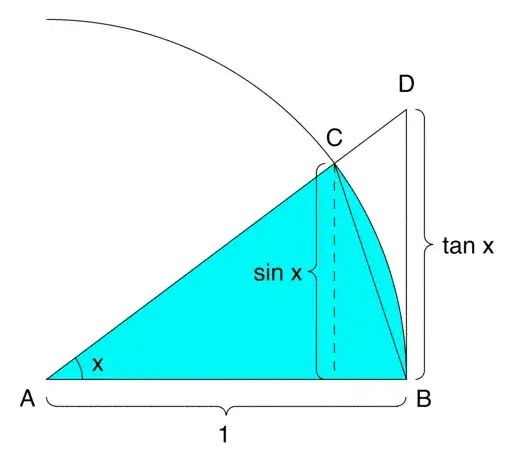In a lot of textbooks on Calculus a proof that $\lim_{x\rightarrow 0}\frac {\sin(x)}{x} = 1$ is the following:

Comparing the areas of triangles $ABC, ABD$ and circular sector, you get: $$ \sin(x)<x<\tan(x) $$ from what you have: $$ \cos(x)<\frac {\sin(x)}{x}<1 $$ from which immidiately follows that $\lim_{x\rightarrow 0}\frac {\sin(x)}{x} = 1$
Don't you think that this kind of proof is not honest. I mean, in the proof we use the fact that the area of sector is $\frac12xr^2$. This formula comes from integrating (an "infinite" sum of "infinitesimal" triangles' areas). So, roughly speaking, we somehow implicitly use that the length of "infinitesimal" chord $BC$ is equal to the length of "infinitesimal" arch $rx$, which is equivalent that $\lim_{x\rightarrow 0}\frac {\sin(x)}{x} = 1$.
Do I miss something?